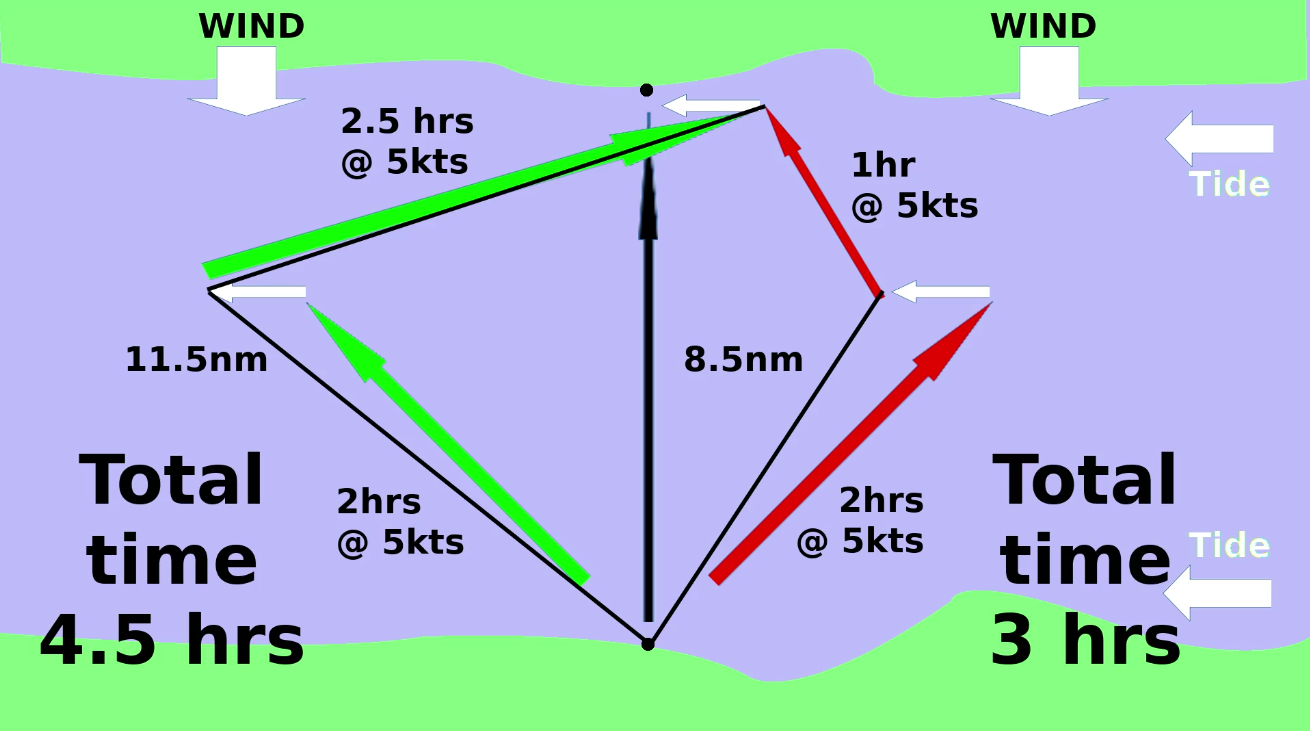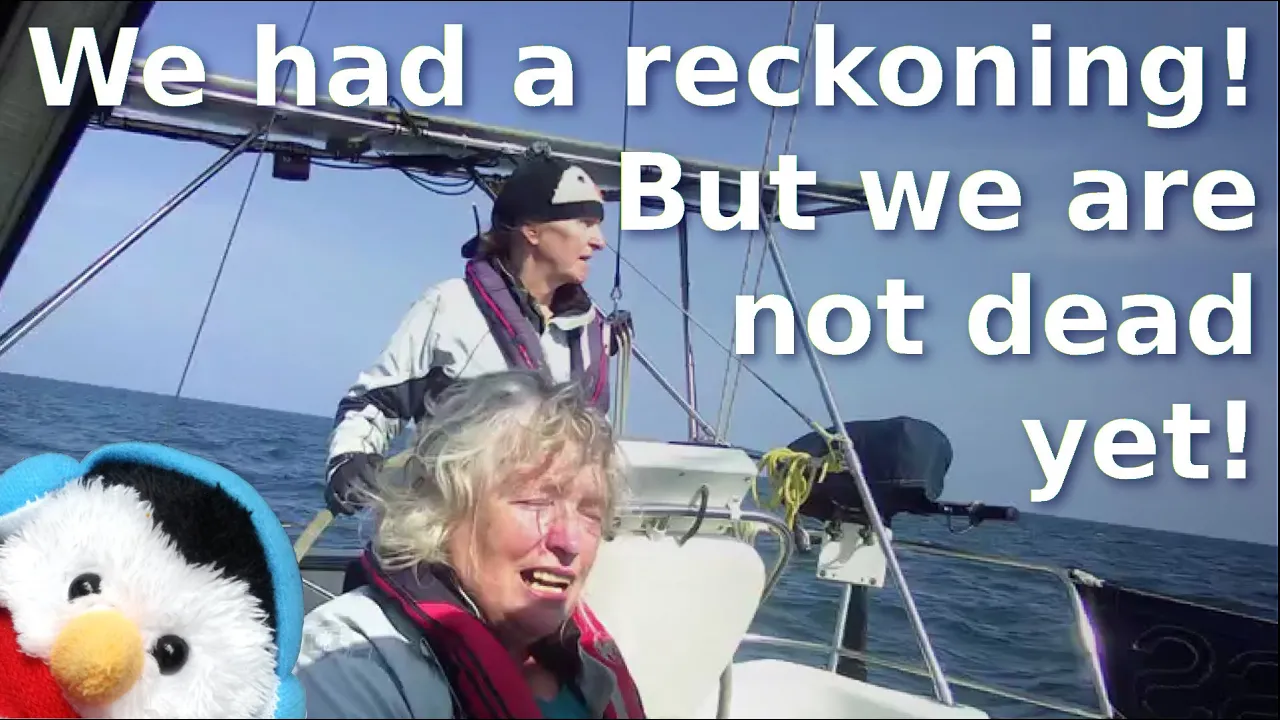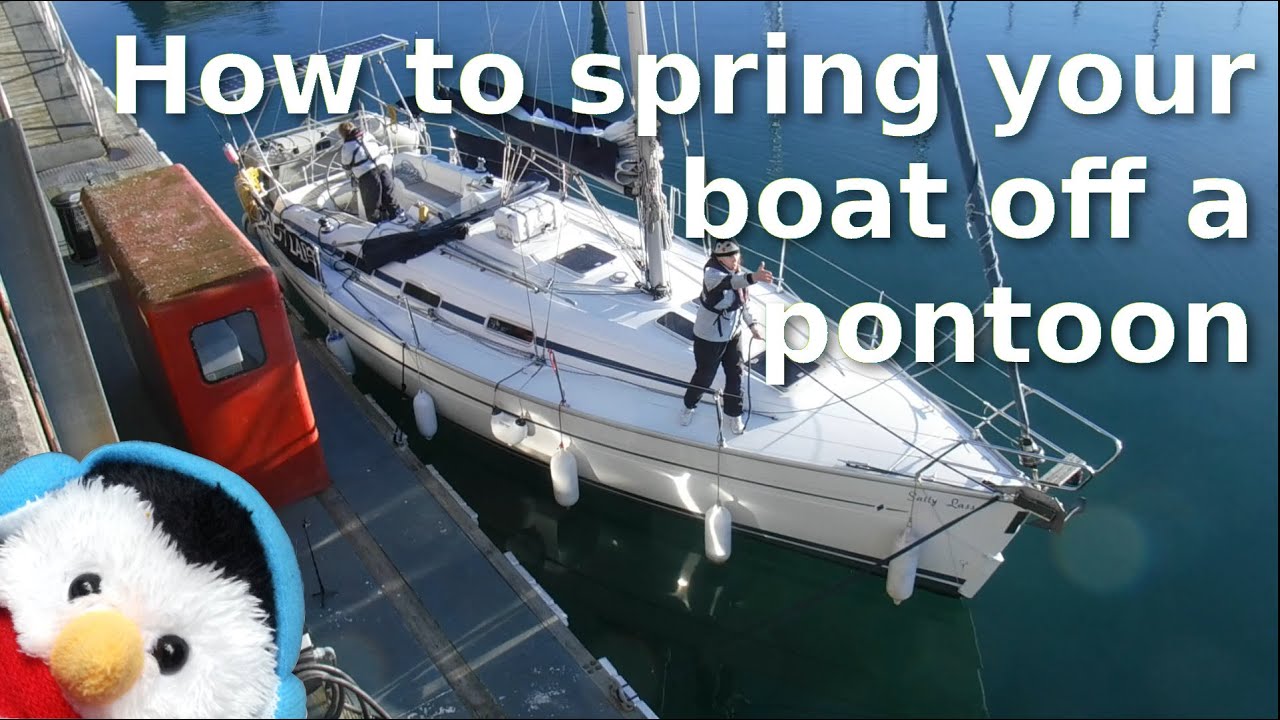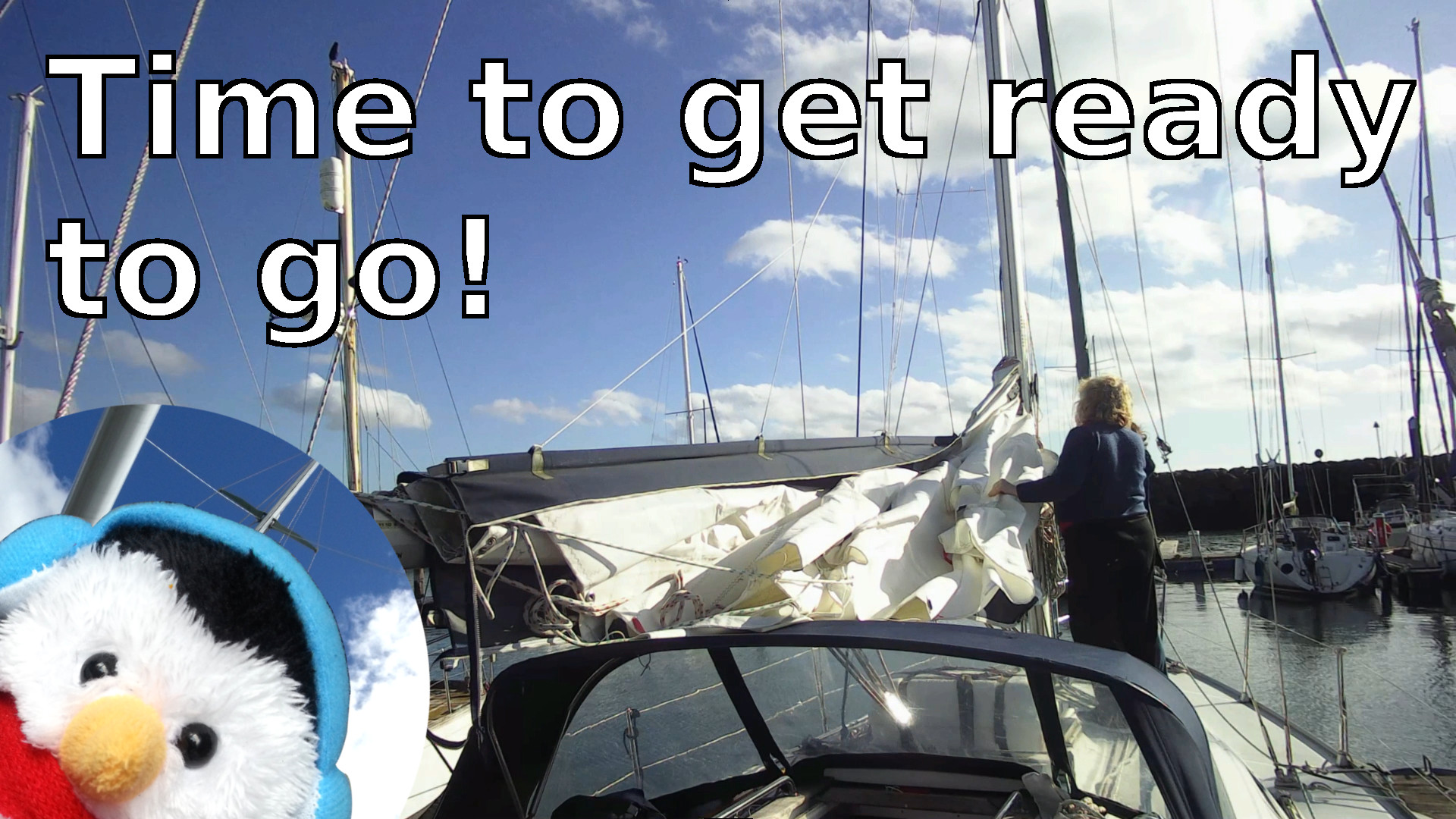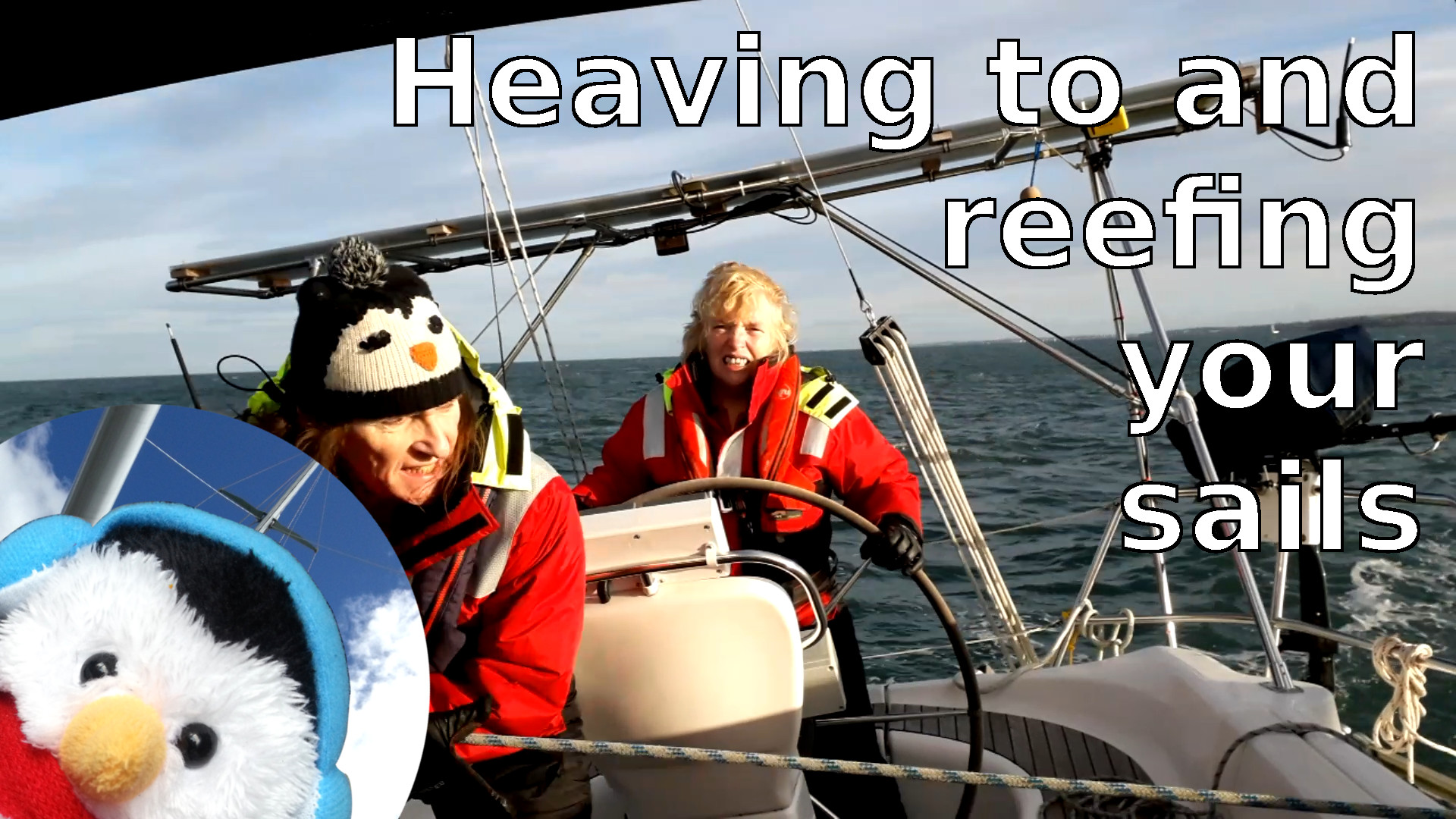We are allowed out of the marina so we took the opportunity to practice some skills and put into practice some of the theory we are learning for our Yacht masters.
We needed to move slip from one of the inner pontoons, to a slip nearer to the entrance. The slip we were on was very tight and even when we sprung off the pontoon we were still a metre away from the other boats, which is just too tight for comfort, so we decided to take a larger slip nearer the entrance, The internet is rubbish at the other slip, but it would give me the confidence to improve my marina skills. So Beverley took us out into the lough near low water slack and we decided to calibrate our compass.
Calibrating our compass
To do this you need to steer along a bearing, which is a lot harder to do than you would think. Once we were established on a course, we would take bearings, on the compass and the instruments with GPS, of which we have quite a few as we have a stand alone GPS Unit, which feeds the radio, as well as two chart plotters, each with GPS. Although the bearings were not the same, they were only different by one or two degrees. We took quite a few bearings, but the plan is to go out another time to take the bearings again. This will give us two things, the first is that if we have gaps in our first set of readings, then we can fill them in, but the second is to cross check the readings that we already have.
After taking the readings for the compass deviation we sailed for a bit, just getting into the way of things then I took her back to the marina and into the slip.
Lee bowing
On the Friday, I had organised to pick up some spares from Bosum Bobs in Bangor, so I took us out of the slip, I did a bit of a three point turn because I had not applied enough thrust, but I didn't hit anything and I managed to take Salty Lass out of the slip and into the lough. When we were out, we could either sail into the tide, or sail so that the tide carried us down the lough which would mean that we would be going really fast. However, in this case it is better to sail into the tide, so that you reach your destination quicker. The technique is explained really well in the video so if you want to know more, take a look, but we also have the explanation below.
Balancing the sails
Another technique we were practising was balancing the sails, this is when the force on the foresail is balanced with that of the main sail. By putting the rudder into the central position, you can take a bead in the land and you can watch the land, On a port tack, if the boat moves to starboard then the force on the Genoa is larger than that on the main, Equally, if the force on the main is larger, then the boat, will go to port. By balancing the sails, then you can get the boat set up so that the boat is balanced and the wheel will stay where it is. This is how you want to set up your boat all the time as it means that your auto pilot is doing less work.
Ramming the pontoon
We managed to sail all the way to Bangor, which was really good, it was then my turn, to take her into the slip. As the pontoon that I would be taking Salty Lass into was on the port side, I asked Beverley to fender up on the starboard side as that would make my turn easier. As I came in, Beverley dropped the line, so I had to ram the pontoon, which I managed to do, Now that I have used that technique, I will be able to use the same technique again. It is all just a matter of building confidence,
After we had done a bit of shopping at Bosum Bobs I took her out of the slip and to the fuel pontoon, so overall I was quite happy with the manoeuvrers that I had done.
The trip home
Before we had started the journey we had agreed that Beverley would be skipper for the trip home. So we had only just left Bangor when the weather turned dreadful. We could either sail home to Carrickfergus or we could motor sail which is what we decided to do. So we put up a scrap of Genoa to stiffen the boat, so that we could cross the lough as quick as we could. That way we would be in the lee of the land, which would improve the sea state. As we were crossing the lough, the main started coming out of the bag, so there was only one course of action and that was to harness up and tie the main down. It was a bit scary going forward, but no where near as bad as Chicken Rock and I knew exactly what I was doing, so I just got on with it.
As we were coming into the slip, the wind caught Salty Lass, so we ended up mooring to the boat next to us and then pulling Salty Lass across the slip on lines. It was a bit of a do, but we were rewarded with a really nice dinner of cottage pie that night.



